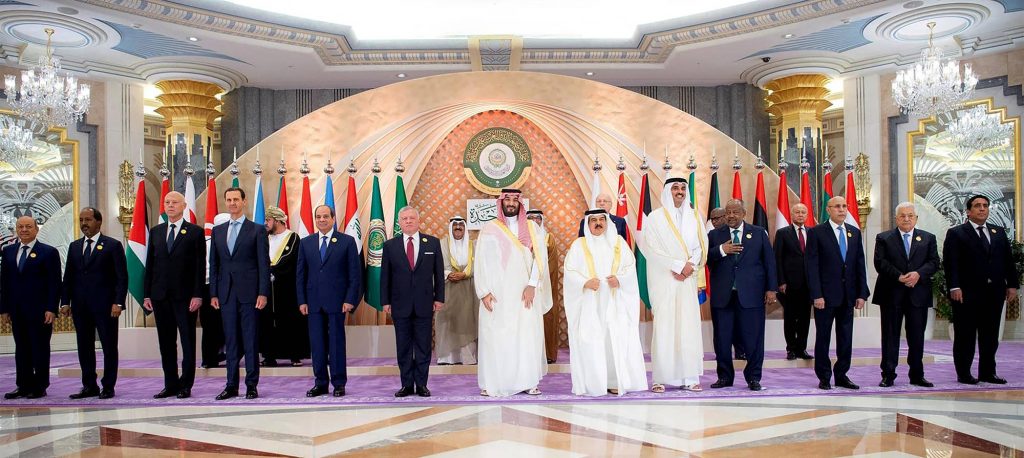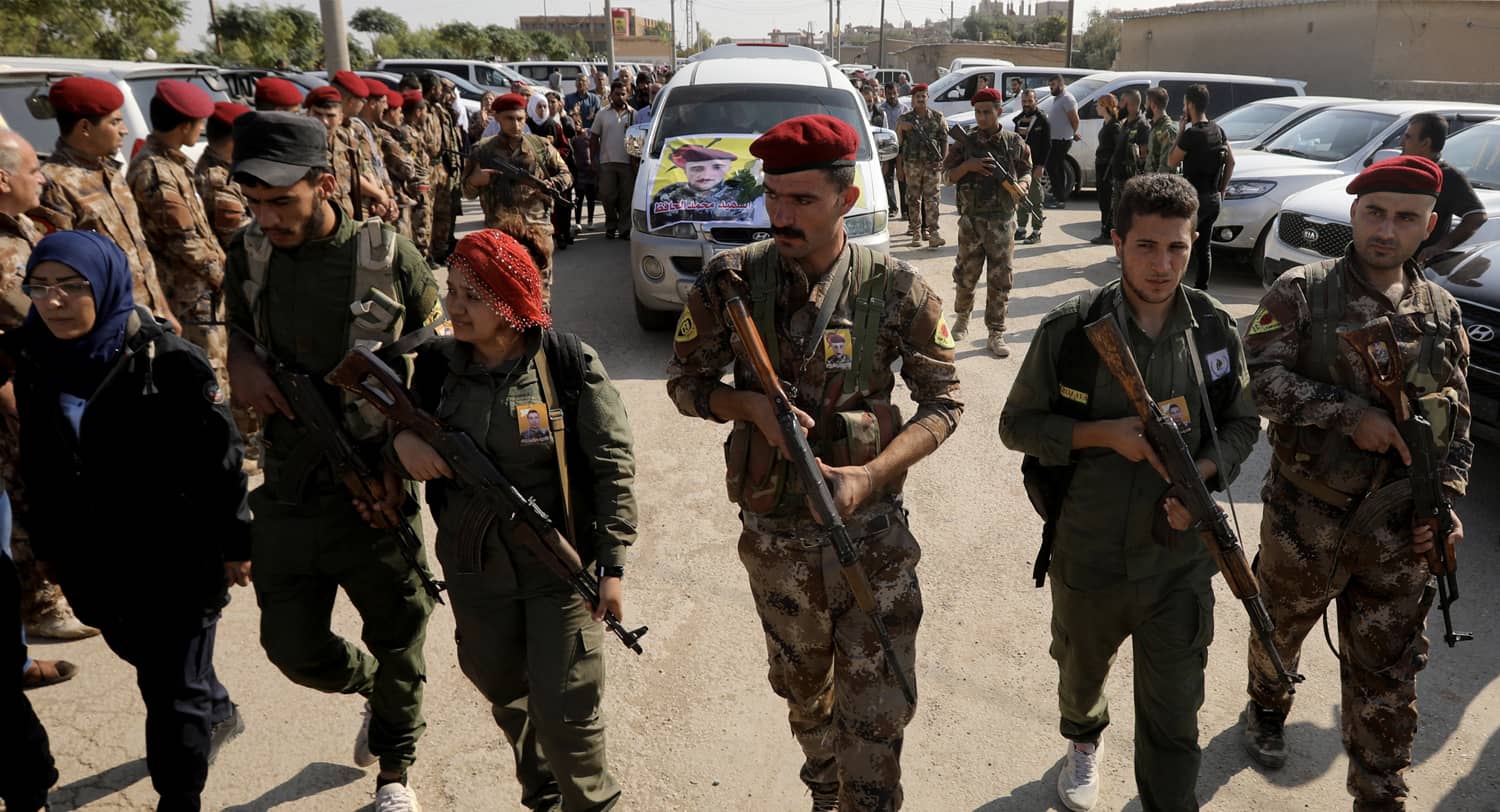Ehud Yaari’s “How Israel Lost the Syrian War” in The Jerusalem Strategic Tribune provides unequaled insight into Israel’s and other states’ actions during the Syrian civil war. He describes Israel’s tactical successes, noting that IRGC Leader Suleimani’s “original plan [to set up a major new rocket and missile front aimed at Israel] for now is on hold,” and that Israeli intelligence believes that Israel has taken down 80-90% of Iran’s military presence threatening Israel in Syria. Yet, he goes on, Assad’s survival, “closely allied with Iran, amounts to nothing short of an Israeli strategic failure.”
This is where Mr. Yaari and I part ways. Those of us working on Syria did not perceive Israel to be seeking to end Assad’s reign, nor could it alone have succeeded. Rather, what we in the US have seen is Israeli tactical success against Iranian rockets and missiles and a contribution to what we have today: a frozen conflict rather than an Assad victory.
The surprise is not that Assad has escaped disaster but that, even after the last two plus years of indifferent American Syria policy, he has not won. That situation, owing in part to Israeli actions, still provides an opportunity for the US, Israel, and other actors to together shape a final Syria outcome to advance regional security. In short, the Syria conflict isn’t over yet.
On the issue of direct or covert Israeli intervention to topple the Assad regime, Ehud Yaari does a fine job describing the arguments for Israel remaining largely on the sidelines: fear of a failed state to the north controlled by Islamic militants, and confused, contradictory policies by those attempting to overthrow or contain the Assad regime, including the United States.
Furthermore, the tools Ehud suggests for a more active Israeli engagement against the Assad regime were flawed. Direct engagement by the Israeli air force to punch a path forward to Damascus for rebel groups was extraordinarily risky, impossible after Russia intervened militarily in 2015, and likely to spark such an intervention if done before. Assassinating Assad would not have overthrown the regime. Bashar, who showed restraint towards Israel during the 2006 Lebanon incursion and the 2007 al-Kibar bombing, would almost certainly have been replaced by his reckless, notably pro-Iranian brother Maher.
To be sure, as Ehud notes, Israel kept its options open by maintaining ties particularly early on with various Syrian opposition and quasi-opposition forces. Senior Israeli officials also had an inkling of the ‘burrowing in’ actions of Iranian IRGC and surrogate elements across Syria. But we in the US perceived that Israel’s top priority remained to suppress IRGC long-range systems deployments in, or through, Syria, a goal which is being achieved. Given that, and absent an obvious ‘solution’ in such a convoluted situation, Israel’s decision not to seek a strategic outcome by acting alone appears prudent.
Israel’s air operations, supported by the US beginning in 2018, and coordinated informally with other military pressure on the Assad regime, have helped freeze the conflict. That year the Trump administration also significantly increased its military footprint in Syria, continuing pressure on the Islamic State after taking down its capital Raqqa in late 2017, annihilating a Wagner Group incursion, and launching air strikes against Assad’s chemical weapons use. The US. also underlined to Russia that it would remain at the Tanf enclave along the Syrian-Jordanian–Iraqi border, while that September a major Assad-Iranian-Russian attack on Idlib was forestalled by Turkish military moves and strong diplomatic support from the US.
These developments, most of them responses to specific threats, finally gave American diplomacy the ‘military pillar’ in Syria which former Secretary Kerry had pressed for in vain. This tool imposed a freeze on territorial expansion by the Assad alliance and opened the door to a negotiated solution. The goal was not to overthrow Assad but to promote reconciliation between the Syrian government and opposition, including a new constitution and eventually elections, formalized in the December 2015 UN Security Council Resolution 2254. That resolution called for:
(1) a ceasefire followed by political reconciliation, a new constitution and accountability, (2) defeat of the Islamic State, (3) return of refugees and internally displaced persons (roughly half of Syria’s 24 million population).
The US view, shared in various degrees by Israeli, Turkish, Arab, European, Syrian opposition, Kurdish-led Syrian Democratic Forces (SDF), UN, and humanitarian NGO partners, was that in order to succeed UNSCR 2254 must be supplemented by three other efforts:
(4) removing permanently Iran’s long-range systems targeted by Israel, (5) assuring Turkish security from a variety of threats on its southern border, and (6) integrating back into a reformed Syrian state the more than 30% of Syria that had a US or Turkish presence, along with the hundreds of thousands of opposition, Hayat Tahrir al-Sham, and Kurdish-led SDF fighters.
These six issues became the core points of discussion in American negotiations with the Russians between 2018 and 2021. The idea was a step by step approach, whereby Assad, the Russians, and Iranians would accommodate the international community on these issues, in return for the US and its many partners moderating actions against the Assad regime: lifting or waiving sanctions, diplomatic recognition, eventually ending outside military presence, aiding reconstruction.
If not, the US with partner support was prepared to maintain a frozen conflict, putting pressure on Assad and providing leverage with the Russians. But the US also recognized that, absent real compromise on these issues by the other side, reducing military presence would not only reward Assad but give Russia and Iran a regional strategic victory.
After showing initial interest in negotiations, all the way to a Putin-Pompeo meeting in 2019, the Russians backed off, presumably to see if a new US administration would change policy.
Initially that Russian bet paid off. The Biden administration ratcheted back the priority placed on the Syria issue, and defined Syria policy as little more than humanitarian relief and fighting Islamic State. Nevertheless, the US, Israeli, and Turkish military presence has remained, along with international community sanctions, largely due to inaction on those six issues. The Biden administration, as witnessed in Senate Foreign Relations Committee testimony in June 2022, returned at least rhetorically to the Trump administration’s position, with action against Assad’s captagon drug smuggling added, within the framework of UNSCR 2254. And it has repeatedly committed of late to maintain sanctions, keep troops in-country, and make no rapprochement with Assad until international demands are met.
Thus Syria remains a failed state in a frozen conflict and not one, according to this writer’s sources, that Moscow finds satisfactory.

Arab states, beginning with the UAE and Jordan, sought a bigger role in resolving the conflict, and, sensing Washington’s relative indifference, launched their own efforts beginning with King Abdullah’s 2021 Syria plan pitched to Putin. This has now resulted in Syria’s return to the Arab League.
There is less than meets the eye in Abdullah’s Syria plan. It incorporates many of the elements of the Trump administration step-by-step approach. Furthermore, the Arab states alone cannot fix Syria. Their one carrot, Syria’s return to the Arab League, has already been given, for seemingly little in return from Assad. The Arabs cannot lift American and European sanctions, remove Turkish, US, and Israeli forces from Syria, lure six million Syrian refugees back, compel the broader international community to embrace Assad or abandon 2254, and erase the chemical weapons and human rights charges against the regime, nor themselves rebuild the country. All that would require a general international community response to concessions by Assad and his partners.
Strategic success for the US, Israel and their allies is still possible by making progress on the six issues, including Iranian long-range system deployments, thus denying a geostrategic win to Moscow and Teheran. This will require more consistency and higher-level attention from Washington, but Jerusalem has a chance to sway the Biden administration.
Syria demonstrates that, in a major regional conflict involving numerous players including two nuclear superpowers, a regional power such as Israel, however strong, cannot achieve a strategic outcome solely on its own. The Syria experiences of two other regional powers, Iran and Turkey, reinforce this conclusion, given Iran’s plea for Russian intervention in 2015, and Turkey’s limited success against the Kurdish-led SDF in the face of its US support. But what a savvy regional power can do, as Israel has shown, is achieve tactical results and, with the help of others, shape a possible strategic success.

